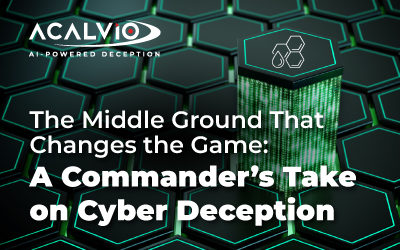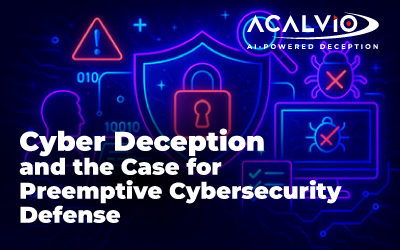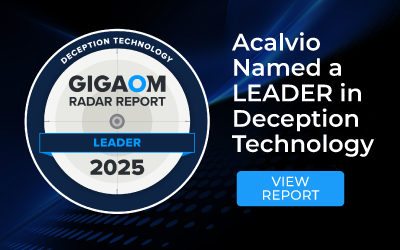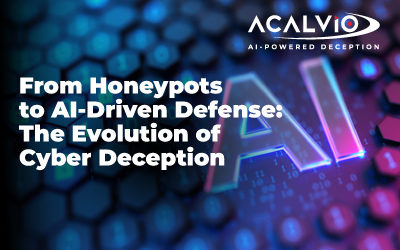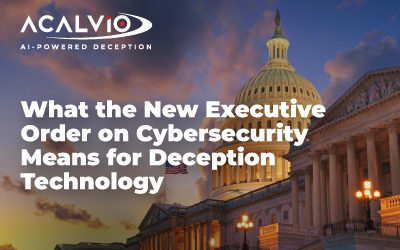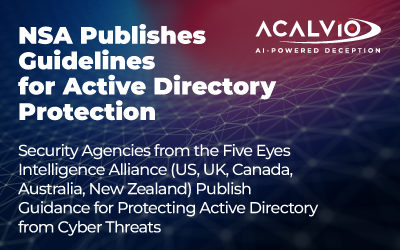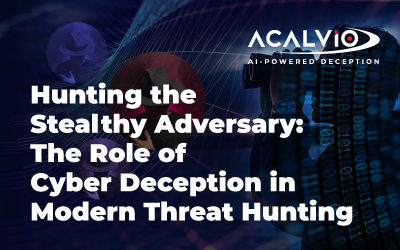Resources
The Middle Ground That Changes the Game: A Commander’s Take on Cyber Deception
Until I discovered Acalvio, I was doing what most organizations still do today: build walls at the perimeter and prepare to recover when — not if — the adversary breaks through. Firewalls, phishing filters, endpoint protection, and a plan for resiliency. That was the playbook.
Cyber Deception and the Case for Preemptive Cybersecurity Defense
Preemptive cybersecurity defense means taking the initiative. Instead of reacting to indicators of compromise, it focuses on adversary objectives—stealing data, escalating privileges, gaining persistence—and puts obstacles in their way.
Smoke, Mirrors, and Cybersecurity Magic: Celebrating Deception Done Right
March 29 is Smoke and Mirrors Day—a nod to the classic art of illusion where magicians used theatrical misdirection to wow audiences.
Acalvio Continues Its Industry Leadership for the Third Year in a Row
GigaOm has published its Radar chart for cyber deception for 2025. With the cyber threat landscape at a particular inflection point from the rise of AI-driven attacks, this report is timely for cybersecurity decision-makers and industry leaders.
From Honeypots to AI-Driven Defense: The Evolution of Cyber Deception
Cybersecurity has witnessed a dramatic evolution over the decades, particularly in the realm of deception technologies.
What the New Executive Order on Cybersecurity Means for Deception Technology
On January 16, 2025, President Biden signed a landmark executive order focused on strengthening and promoting innovation in the nation’s cybersecurity landscape.
Defending Against AI-enabled One-Day and Zero-Day Vulnerability Exploits
In this two-part blog series, we examine how advancements in artificial intelligence (AI) are transforming the cybersecurity landscape. In our first article, we discuss how threat actors now employ AI to automate the creation of code exploits for known (one-day) and...
How Deception Technology Derailed a Malicious Insider Attack
Summary A large enterprise faced a critical insider threat when a rogue administrator exploited a service account and script used for managing user accounts in Active Directory (AD). The attacker attempted to disable user accounts, including an Acalvio honeytoken...
Elevating Endpoint Security: Why Modern Threats Need Defense Beyond EDR
Endpoint security remains a cornerstone of modern cybersecurity strategies, primarily driven by Endpoint Detection and Response (EDR) solutions. While EDR has become a widely adopted safeguard for user and server environments, it has a set of detection gaps that need...
Protecting Active Directory: Proactive Cybersecurity Strategies
Government agencies across five nations (US, UK, Australia, Canada, New Zealand) have published guidance on the methods for protecting Active Directory from cyber threats.
Protecting Financial Services with Advanced Deception Technology
As cyber threats evolve in complexity and scale, financial institutions remain one of the most targeted industries worldwide.
Hunting the Stealthy Adversary: The Role of Cyber Deception in Modern Threat Hunting
The 2024 CrowdStrike Threat Hunting Report emphasizes the evolution of adversaries as they navigate through identity, endpoint, and cloud domains.
